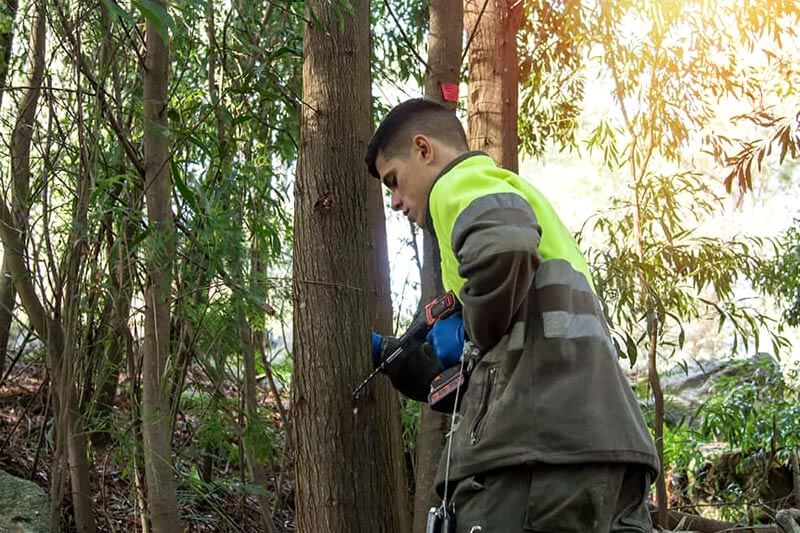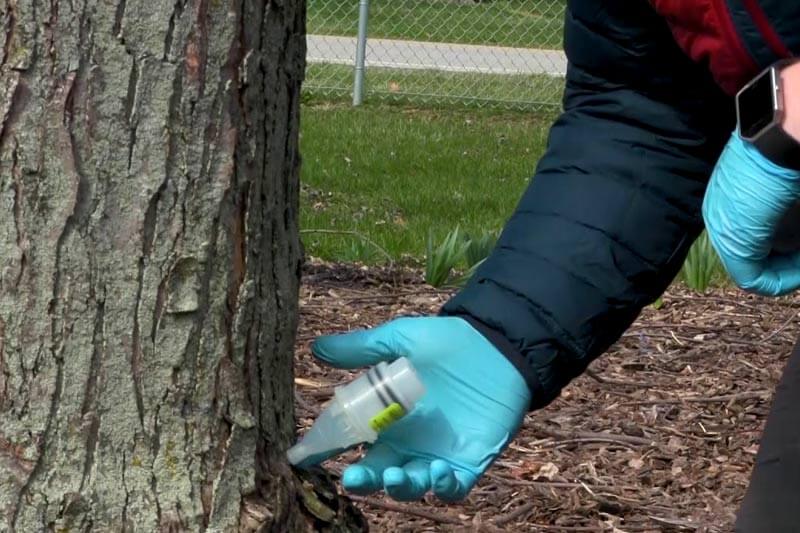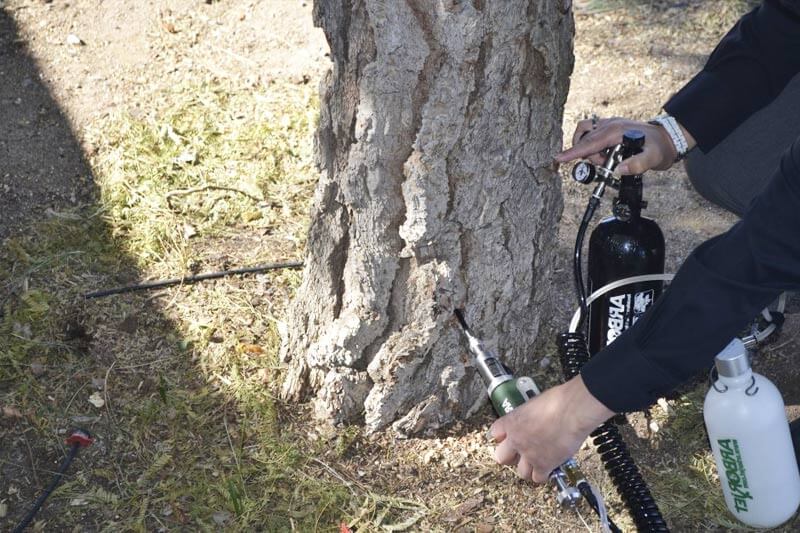An arborist might recommend tree injection therapy for treating diseased or pest-infested trees in your garden.
Tree injections cost $10 per inch of the tree’s diameter. For an average-sized tree, you are likely to pay $50 – $75. It may cost up to $200 to inject a large tree.
Tree injections are effective treatments for lots of common elements. You will see a fast improvement in the health of the injected tree.

What we cover
ToggleFactors That Determine How Much You Pay For Tree Injections
Size Of The Tree
The larger the tree, the more you pay. The average cost of a tree injection is $10 per inch of its diameter.
An older tree will have a larger diameter than a young tree. Therefore, you will pay when the older tree gets a tree injection.
Type Of Treatment
Trees get different types of infections. For every tree infection, there is an injection. How much you pay depends on the condition treated.
Depending on the treatment required, your tree may require more injections. More injections mean that the tree gets more medication.
The higher the quantity of medication injected into the tree, the higher you pay.
Labor
Depending on where you live, different arborists have different rates. In addition to the injection, you have to pay for labor.
The higher the labor rates in your area, the higher you pay for your tree injection.
Frequency Of Treatment
Sometimes, it takes a long time for treated trees to get better. Therefore, the tree will require several injections before you can see signs of improvement.
The longer it takes to treat the tree, the more you will pay for its treatment. More time for treatment means more injections for the tree. You will have to pay for every injection your tree gets.
Only a professional arborist can determine the number of injections needed.
Number Of Trees
You will pay more if you have many trees that need treatment. Also, the cost of treatment will vary depending on the size of the tree.
A large tree may need more injections to treat. You will pay more if you have many large trees that require treatment.
How Do Tree Injections Work
Tree injection is like an IV for your tree. You can use tree injections to treat diseases and repel pests and insects.
Tree injection is administered directly onto the trunk of the tree.
First, the arborist will dig a hole in the trunk to remove the bark of the tree trunk to create space for the injection. The bark may be too hard for the needle to go through.
The arborist will then place an injection in the hole. It ensures that the injected drugs go directly to the vascular structure of the tree, to the roots, leaves, and stems.
Tree injections work faster than other tree treatment methods. You can inject medication or fertilizer into a tree.
Types Of Tree Injections
Micro Injection
Microinjection on a tree uses a small needle to inject a range of chemicals and treatments into the tree.
You will drill a small hole in the tree, place a port, and pass the needle through it into the tree.
When injecting a specific part of the tree, use micro-injections.

Macro Injection
Macro injections derive their name from their use. Microinjection needs a single hole on a specific part of the tree to deliver small amounts of medication or nutrients.
A macro injection is when you have many ports on the tree. Its location allows it to inject more nutrients or medication into a tree.

Benefits Of Tree Injections
- Fast-acting.
- Injections do not affect plants and people near the tree, unlike spraying.
- Affordable.
- Treat a range of conditions.
- Protect the tree against disease and pests.
- Injections are not affected by the weather. If you spray pesticides or apply topical medications, their potency is reduced by rain and wind.
- Eco-friendly. You will not spray treatment chemicals into the air or the soil.
- Easy to use.
- Increase property value.
Disadvantages Of Tree Injections
- While it is easy to use, you cannot DIY. You need to hire a professional arborist to do it for you.
- Wounds the tree trunk when you dig a hole in it.
- Injected chemicals may affect the insides of the tree.
- You may need more than one injection to treat the tree.
- The holes made in the tree may cause it to dry and decay, attract pests, and get more infections.
- The chemicals injected into the tree are likely to leave residue on the fruits. It may affect the health of those who eat the fruits.
Cost Of Tree Treatment
| Treatment Method | Average Cost |
|---|---|
| Tree injection | $50-$75 |
| Tree removal | $750-$1000 |
| Trimming | $350-$500 |
| Tree/ Bush spraying | $150-$400 |
Can I DIY Tree Injections
Tree injection is an easy process. Tree injection DIY kits are available to buy if you want to inject your trees.
However, to effectively treat your trees via injection, you need the correct diagnosis and chemicals to inject them into the tree.
Without the skill of an arborist, you can inject chemicals that will end up killing your tree instead of treating it.
When you are aware of the disease on your tree and the appropriate medication and dosage for the tree, you can opt for a DIY tree injection.
When it comes to tree treatments, hire a professional to assess and treat your trees.
Use This Free Tool
Gotreequotes.com is a free tool that connects you to professional tree service providers.
Whether you want your trees treated, trimmed, or removed, you can find a tree professional near you.
It works in a few easy-to-follow steps.
- Enter your zip code.
- Fill out the form and click submit.
- You will receive three or more quotes from tree service professionals.
- Contact them and hire.

Do I Need A Permit For Tree Injections
Depending on where you live, you may require a permit to inject your trees.
Hire an arborist to check on your trees. As a tree service professional, they will let you know whether you need a permit to treat your trees.
Tree trimming and removal will require a permit. When you hire a professional to carry out these tasks, they can get it for you.
Benefits Of Healthy Trees
- Improve aesthetics.
- Enhance property value.
- Improve the quality of air in the environment.
- Enjoy shade and fruits.
- Attract birds.














